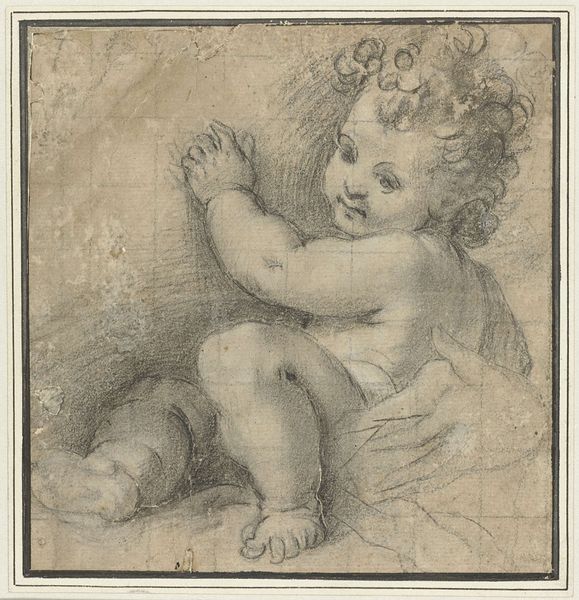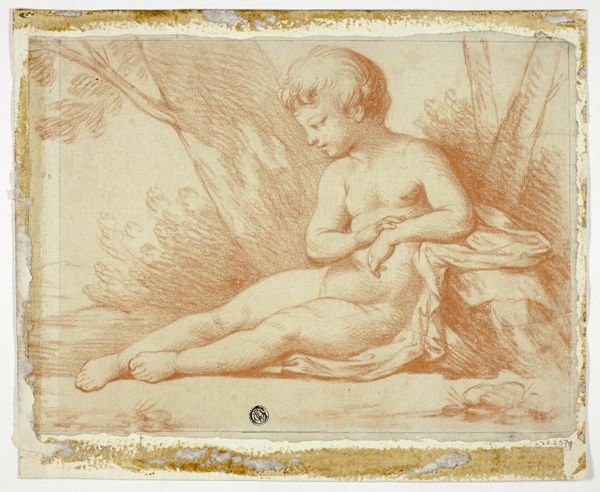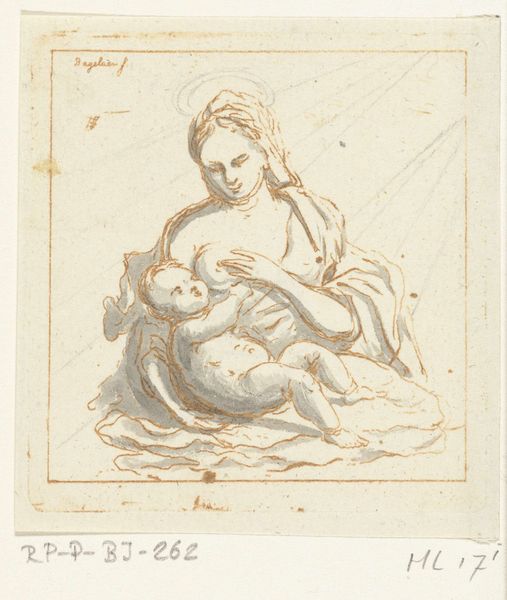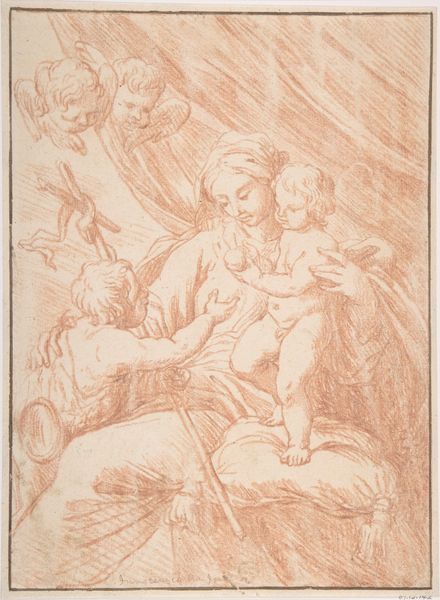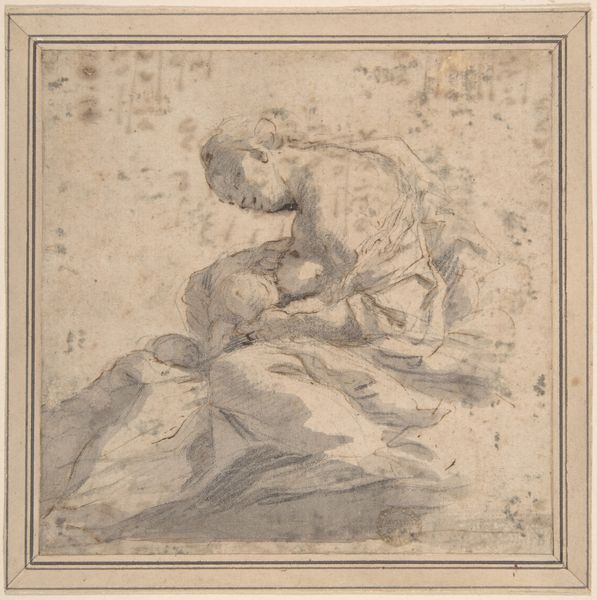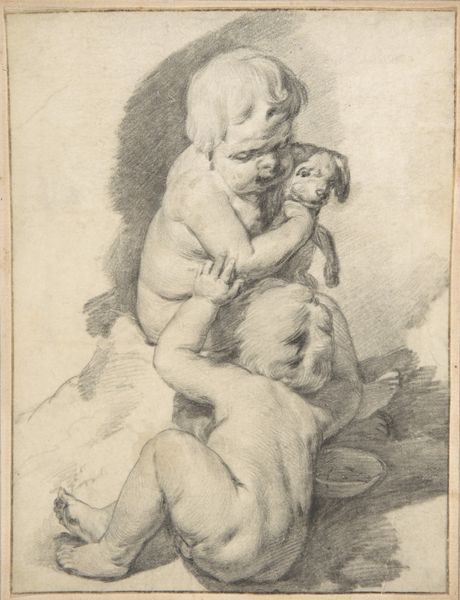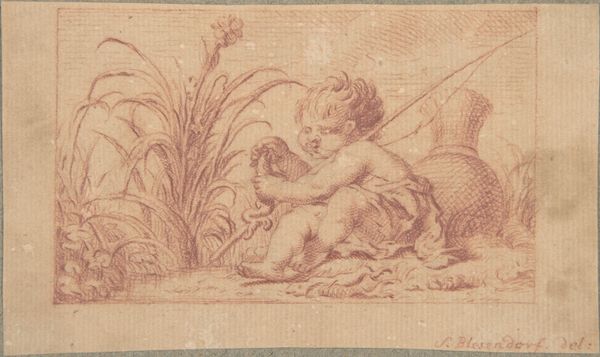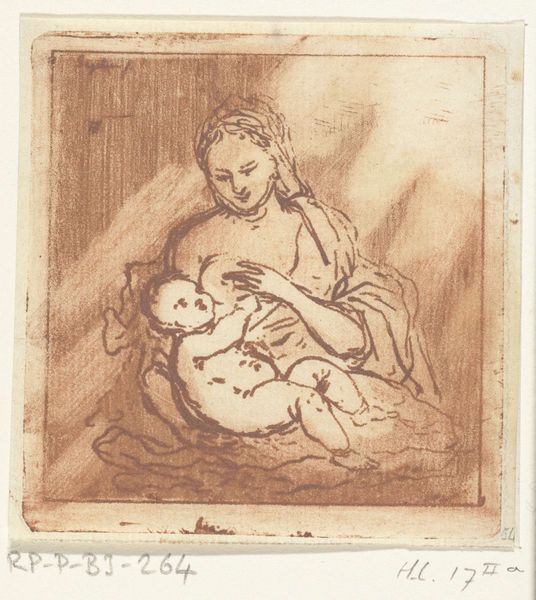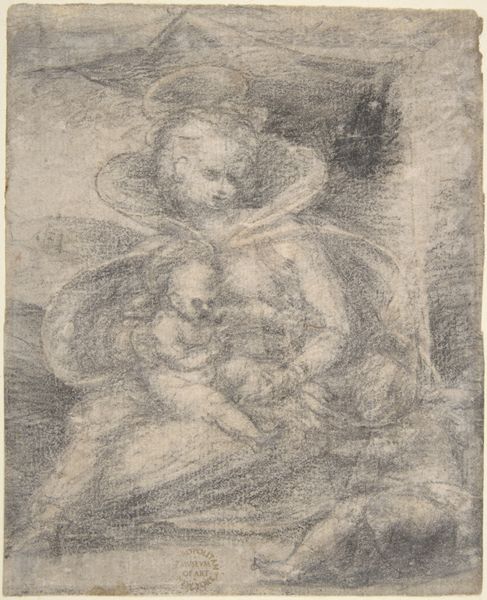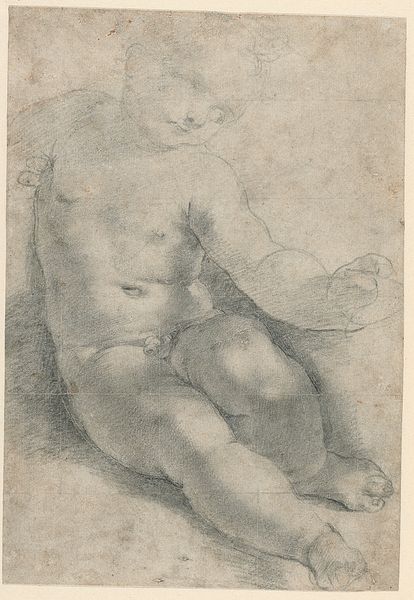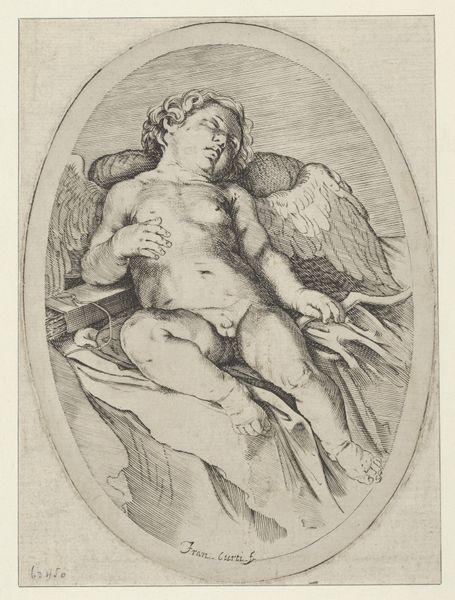
Dimensions: Sheet (Trimmed): 5 13/16 × 5 7/16 in. (14.7 × 13.8 cm)
Copyright: Public Domain
Editor: Here we have Stefano Mulinari's "Saint John the Baptist with a Lamb," etched sometime between 1766 and 1778. It's such a tender image. What historical context should we consider when looking at this work? Curator: Well, the image presents Saint John not as a powerful prophet, but as an innocent child. Think about the rising tide of Enlightenment ideals during this period. There’s a growing emphasis on individual experience, particularly childhood, and its inherent purity. The lamb, traditionally a symbol of Christ's sacrifice, becomes less about religious dogma and more about nurturing innocence. Editor: So, you're saying the artist is tapping into a cultural shift? How does this shift change how it was received? Curator: Exactly! Baroque art, while deeply religious, was also employed by the Church for public influence and reform. What message do you think a sweet innocent John sends, instead of a gaunt preaching prophet? It shifts from authoritative command to gentle persuasion. It aligns religious virtue with notions of natural goodness. The accessibility to public is striking, no? Editor: I hadn't thought about it that way. So, the Baroque elements are there, but they’re being used to reflect a changing societal view. Instead of preaching doom, this Saint John presents a model for morality through purity, presented for gentle, moral influence. Curator: Precisely. Consider the print's potential distribution, perhaps gifted as a tool of moral education for wealthy young citizens, in homes with the space to ponder questions of faith through daily reflection. Editor: This definitely helps me appreciate the art beyond its aesthetic charm and Baroque origin. Now I can understand the important role imagery played within the changing cultural values.
Comments
No comments
Be the first to comment and join the conversation on the ultimate creative platform.
